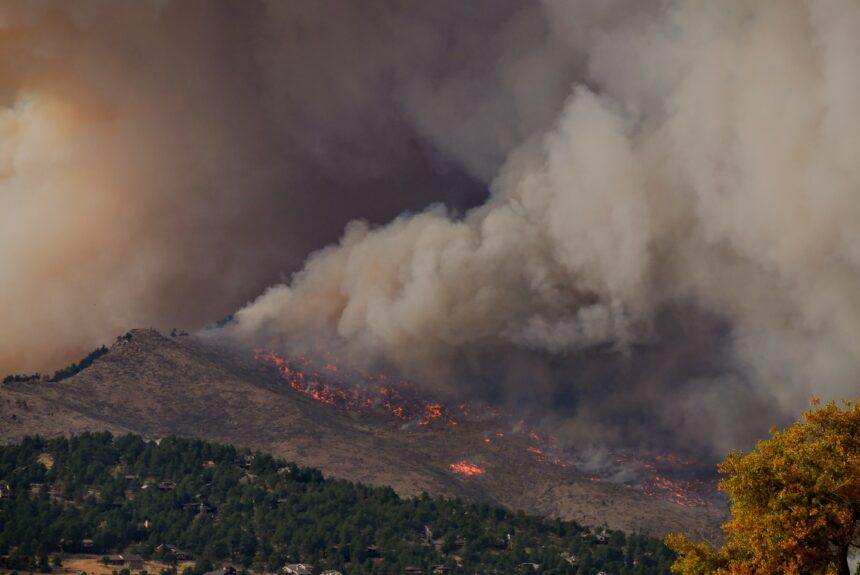The following is an excerpt from Nick Loris’ testimony to the Senate Banking Committee on March 8, 2023, on the economic costs of wildfires. Watch the full hearing here.
Thank you for this opportunity to appear before the committee to discuss the economic costs of wildfires. My written testimony consists of the following sections:
- The causes and influences driving severe wildfires and longer wildfire seasons.
- The economic and environmental costs of wildfires.
- Challenges to active forest management.
- Solutions to help reduce wildfire risks and costs.
The economic and environmental costs of wildfires
Wildfires are devastating to families, the economy, and the environment. Wildfires claim lives and livelihoods and can take away all a family’s possessions in seconds. In 2021 alone, wildfires burned nearly 6,000 structures – 60 percent of which were residences. Experiencing such a traumatic event can have impacts on human wellbeing as well as physical and mental health. Entire communities can be lost in minutes but will take years to fully rebuild. Fully accounting for the costs of wildfires must include the direct and indirect costs, rehabilitation, health impacts and losses to biodiversity and the environment. Some costs are certain and others unknown, which makes fully accounting for the cost of wildfires a difficult task.
The greatest cost is the loss of life. Around the world, wildfires can take dozens or even hundreds of lives each year. In 2018, the Camp Fire in Paradise, California killed 88 people, making it one of the deadliest on record. Wildfires in the U.S. have destroyed thousands of homes and businesses (more than 18,000 in Camp Fire). According to the Insurance Information Institute, roughly 3.7 million homes were at risk for extreme wildfires in 2022. Globally, insurance claims due to wildfires have risen to $10 billion per year.
Direct suppression costs incurred by the federal government and paid by the taxpayer are significant. A January 2023 study in the American Economics Association totaled the suppression costs for 11 states to be more than $13 billion from 1995-2016. The Forest Service spent $3.7 billion and the Department of Interior spent $648,000 in suppression costs in 2021. The five-year average for federal suppression costs is more than $2.8 billion annually. State, local, and private suppression costs can also cost tens of millions of dollars per year or in California’s case, more than $1 billion (which includes federal reimbursement).
Wildfires result in substantial adverse effects on human health, healthy ecosystems, and the environment. Fires cause higher exposure to particulate matter, loss of wildlife, vegetation, habitat, and increased greenhouse gas emissions. They also increase soil erosion, which can negatively affect watersheds.
Perhaps the most comprehensive analysis of the economic burden of wildfires is a 2017 report from the National Institute for Standards and Technology. The authors provide a literature review and explanation for calculating intervention costs, prevention, mitigation, suppression, and direct/indirect net losses. They find, “The annualized economic burden from wildfire is estimated to be between $71.1 billion to $347.8 billion ($2016 US). Annualized costs are estimated to range from $7.6 billion to $62.8 billion. Annualized losses are estimated to range from $63.5 billion to $285.0 billion.” Although the NIST study does not include the economic damages of more recent fires, the report is wide-ranging and comprehensive in its literature review and estimates.
The authors use standard practices and peer-reviewed literature to measure the economic burden in each category they assess. Even so, while some costs like suppression are more straightforward, other economic, human health, and environmental costs can vary greatly in how economic literature estimates them. For instance, regarding the adverse human health impact of wildfires, the authors note, “The consensus of the literature is that smoke from wildland fires has deleterious effects on the health of people exposed to it, but the severity of that effect is still not well understood.” There can be inconsistencies, uncertainties, and incomplete data that economists consider, which produces a wide range of outcomes. Nevertheless, the study underscores the magnitude and far-reaching costs of wildfires.
Watch the full hearing here.


